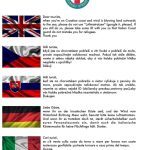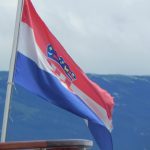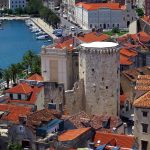A festive taste of Croatia in Munich this Easter.
You know those huge yet intricately painted Easter eggs you see dotted around Zagreb during the Easter period? Well one lucky egg is making its way from Croatia to the streets of Munich, Germany this Easter.
The eggs, which symbolise joy, friendship and an expression of love over Easter are finely decorated and, apart from their shape, are all completely individual.
The Tourist Board of Koprivnica and Krizevci County has for several years held a charming outdoor exhibition of large decorated Easter eggs called ”Pisanica od srca” (Easter Egg from the heart) during the Easter season. (This years exhibition will be held on Zrinski Square, Koprivnica from 11 – 20 March).
This year one of the eggs will head all the way from Koprivnica, Croatia to the popular German city and cultural hub of Munich. It will be the first time that one of the eggs has been to Germany, and it will therefore have another city to add to the map after one being shown in Hungary last year. The ”Pisanica” was painted by Croatian naïve expression artists Stjepan Pongrac, Josip Greguric, Djuro Jakovic and Zlatko Strficek. Before the egg makes its premier appearance in Germany it will be, by tradition, exhibited on Zrinski Square in Koprivnica.
The Koprivnica Tourist Board started the ”Easter egg from the heart” project way back in 2007 with the aim that the large Easter eggs would be displayed all over Croatia and eventually, the rest of Europe and the world, as a symbol of the age old traditions of the otherwise little known Podravina region, but also as a sign of joy and love at Easter.
While not practised in very many countries, the tradition of painting and decorating Easter eggs has taken place for many generations in Croatia and the activity continues to play an important role to this day. During the Easter celebrations, the eggs would be painted with vibrant, joyful colours and would be given as gifts, especially to children. Before paint became easy to come by and cheap, villagers would become inventive and use whatever resources they had available to make the dyes and paints for the eggs themselves. Among the most common colours was red, due to its brightness, and the abundance of vegetables like carrots and red beets being grown on local farms and smallholdings.
On Easter Day, a very old game is played among families and friends who have gathered to eat a traditionally large lunch (more often than not, involving Rakija, of course) in which at least two people choose eggs and hold them vertically while one person taps the end of the other egg with their end, to see whose egg will crack. Anyone whose egg cracks must choose another and then tap the other person’s egg, and they continue until all the eggs have been used. Whoever holds the strongest egg in the end which has not been cracked, wins.
If you’re in Koprivnica in March, be sure to visit the ”egg-shibition”. And in Zagreb over the coming Easter period, keep an eye out for the large eggs located in various places around the city, you can’t miss them!







